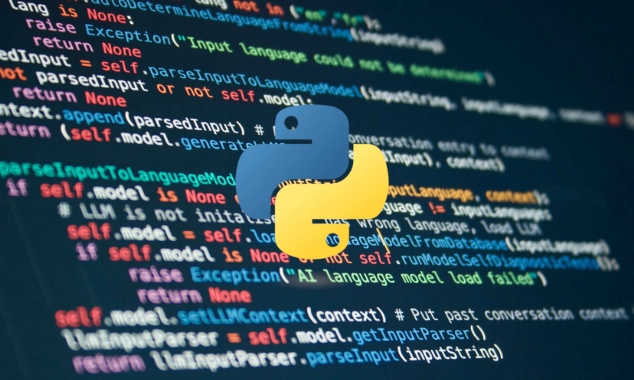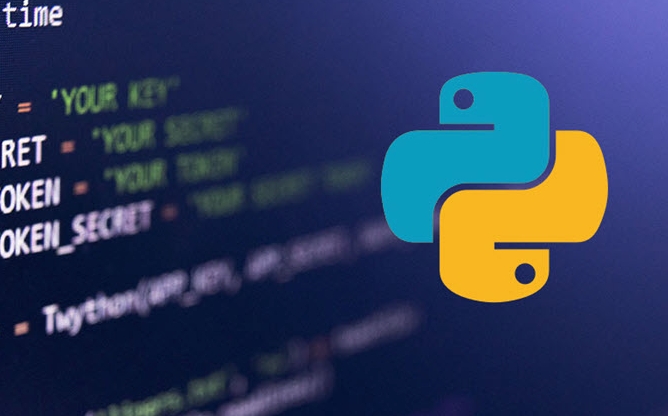os.path.join() can automatically use the correct path separator according to the operating system to ensure cross-platform compatibility. 1. Basic usage: splice path components, such as os.path.join('folder', 'subfolder', 'file.txt'), Windows output folder\subfolder\file.txt, Linux/macOS output folder/subfolder/file.txt. 2. Combined with the current script directory: get the current directory through os.path.dirname(file), and then splice the configuration file path, which is suitable for reference to resources in the project. 3. Build the user home directory path: use os.path.expanduser('~') to obtain the home directory, and then splice sub-paths such as Documents, which are safe and reliable. 4. Handle absolute path mixing: start splicing from the path when an absolute path is encountered, for example, os.path.join('/tmp', '/etc', 'hosts') output /etc/hosts, the previous part is discarded. 5. Dynamic construction path: Use unpacking lists, such as os.path.join('root', ['data', 'raw', '2024', 'january'], 'log.txt'), which are suitable for scenarios with multiple path levels or dynamic generation. It is recommended to always use os.path.join() instead of string splicing to avoid compatibility issues caused by hard-coded separators, thereby effectively preventing cross-platform path errors.

os.path.join() is a common method used in Python to splice file paths. It can automatically use the correct path separator according to the operating system (\ on Windows and \ on Linux/macOS / to avoid compatibility issues caused by hard-coded paths.

Basic usage examples
import os # splicing multiple path components path = os.path.join('folder', 'subfolder', 'file.txt') print(path)
The output results will vary according to the operating system:
- Windows :
folder\subfolder\file.txt - macOS/Linux :
folder/subfolder/file.txt
Writing this way can ensure that your code works normally on different systems.

Practical application scenarios
1. Use with the current script directory
import os # Get the directory where the current script is located current_dir = os.path.dirname(__file__) # stitching configuration file path config_path = os.path.join(current_dir, 'config', 'settings.json') print(config_path)
Suitable for scenarios where relative paths such as configuration files and resource files are referenced in the project.
2. Build the path under the user's home directory
import os home = os.path.expanduser('~') # Get the user home directory project_path = os.path.join(home, 'Documents', 'my_project', 'data.csv') print(project_path)
For example, if you want to save the file to the user's Documents folder, this method is the safest.

3. Handle the mixing of absolute and relative paths
import os # Even if the absolute path is included, os.path.join will splice base = '/home/user' full = os.path.join(base, 'documents', 'notes.txt') print(full) # Output: /home/user/documents/notes.txt #Special case: When encountering an absolute path (such as Windows C:\ or Linux /) will be reset # Under Linux: result = os.path.join('/tmp', '/etc', 'hosts') print(result) # Output: /etc/hosts (because /etc is an absolute path)
?? Note: Once
os.path.join()encounters an absolute path, the previous part will be discarded.
Tips: Dynamically build paths
import os folders = ['data', 'raw', '2024', 'january'] filename = 'log.txt' path = os.path.join('root', *folders, filename) print(path)
Output (Linux):
root/data/raw/2024/january/log.txt
Use * to unpack the list, suitable for situations where there are many path levels or dynamic generation.
Basically that's it. os.path.join() seems simple, but it is very critical in cross-platform development and can help you avoid many path errors. It is recommended to always use it instead of string splicing (such as 'folder/' 'file.txt' ).
The above is the detailed content of python os.path.join example. For more information, please follow other related articles on the PHP Chinese website!

Hot AI Tools

Undress AI Tool
Undress images for free

Undresser.AI Undress
AI-powered app for creating realistic nude photos

AI Clothes Remover
Online AI tool for removing clothes from photos.

Clothoff.io
AI clothes remover

Video Face Swap
Swap faces in any video effortlessly with our completely free AI face swap tool!

Hot Article

Hot Tools

Notepad++7.3.1
Easy-to-use and free code editor

SublimeText3 Chinese version
Chinese version, very easy to use

Zend Studio 13.0.1
Powerful PHP integrated development environment

Dreamweaver CS6
Visual web development tools

SublimeText3 Mac version
God-level code editing software (SublimeText3)

Hot Topics
 Building Immutable Objects in PHP with Readonly Properties
Jul 30, 2025 am 05:40 AM
Building Immutable Objects in PHP with Readonly Properties
Jul 30, 2025 am 05:40 AM
ReadonlypropertiesinPHP8.2canonlybeassignedonceintheconstructororatdeclarationandcannotbemodifiedafterward,enforcingimmutabilityatthelanguagelevel.2.Toachievedeepimmutability,wrapmutabletypeslikearraysinArrayObjectorusecustomimmutablecollectionssucha
 A Developer's Guide to Maven for Java Project Management
Jul 30, 2025 am 02:41 AM
A Developer's Guide to Maven for Java Project Management
Jul 30, 2025 am 02:41 AM
Maven is a standard tool for Java project management and construction. The answer lies in the fact that it uses pom.xml to standardize project structure, dependency management, construction lifecycle automation and plug-in extensions; 1. Use pom.xml to define groupId, artifactId, version and dependencies; 2. Master core commands such as mvnclean, compile, test, package, install and deploy; 3. Use dependencyManagement and exclusions to manage dependency versions and conflicts; 4. Organize large applications through multi-module project structure and are managed uniformly by the parent POM; 5.
 Building RESTful APIs in Java with Jakarta EE
Jul 30, 2025 am 03:05 AM
Building RESTful APIs in Java with Jakarta EE
Jul 30, 2025 am 03:05 AM
SetupaMaven/GradleprojectwithJAX-RSdependencieslikeJersey;2.CreateaRESTresourceusingannotationssuchas@Pathand@GET;3.ConfiguretheapplicationviaApplicationsubclassorweb.xml;4.AddJacksonforJSONbindingbyincludingjersey-media-json-jackson;5.DeploytoaJakar
 How to use Java MessageDigest for hashing (MD5, SHA-256)?
Jul 30, 2025 am 02:58 AM
How to use Java MessageDigest for hashing (MD5, SHA-256)?
Jul 30, 2025 am 02:58 AM
To generate hash values using Java, it can be implemented through the MessageDigest class. 1. Get an instance of the specified algorithm, such as MD5 or SHA-256; 2. Call the .update() method to pass in the data to be encrypted; 3. Call the .digest() method to obtain a hash byte array; 4. Convert the byte array into a hexadecimal string for reading; for inputs such as large files, read in chunks and call .update() multiple times; it is recommended to use SHA-256 instead of MD5 or SHA-1 to ensure security.
 Developing a Blockchain Application in Java
Jul 30, 2025 am 12:43 AM
Developing a Blockchain Application in Java
Jul 30, 2025 am 12:43 AM
Understand the core components of blockchain, including blocks, hashs, chain structures, consensus mechanisms and immutability; 2. Create a Block class that contains data, timestamps, previous hash and Nonce, and implement SHA-256 hash calculation and proof of work mining; 3. Build a Blockchain class to manage block lists, initialize the Genesis block, add new blocks and verify the integrity of the chain; 4. Write the main test blockchain, add transaction data blocks in turn and output chain status; 5. Optional enhancement functions include transaction support, P2P network, digital signature, RESTAPI and data persistence; 6. You can use Java blockchain libraries such as HyperledgerFabric, Web3J or Corda for production-level opening
 python property decorator example
Jul 30, 2025 am 02:17 AM
python property decorator example
Jul 30, 2025 am 02:17 AM
@property decorator is used to convert methods into properties to implement the reading, setting and deletion control of properties. 1. Basic usage: define read-only attributes through @property, such as area calculated based on radius and accessed directly; 2. Advanced usage: use @name.setter and @name.deleter to implement attribute assignment verification and deletion operations; 3. Practical application: perform data verification in setters, such as BankAccount to ensure that the balance is not negative; 4. Naming specification: internal variables are prefixed, property method names are consistent with attributes, and unified access control is used to improve code security and maintainability.
 css dark mode toggle example
Jul 30, 2025 am 05:28 AM
css dark mode toggle example
Jul 30, 2025 am 05:28 AM
First, use JavaScript to obtain the user system preferences and locally stored theme settings, and initialize the page theme; 1. The HTML structure contains a button to trigger topic switching; 2. CSS uses: root to define bright theme variables, .dark-mode class defines dark theme variables, and applies these variables through var(); 3. JavaScript detects prefers-color-scheme and reads localStorage to determine the initial theme; 4. Switch the dark-mode class on the html element when clicking the button, and saves the current state to localStorage; 5. All color changes are accompanied by 0.3 seconds transition animation to enhance the user
 css dropdown menu example
Jul 30, 2025 am 05:36 AM
css dropdown menu example
Jul 30, 2025 am 05:36 AM
Yes, a common CSS drop-down menu can be implemented through pure HTML and CSS without JavaScript. 1. Use nested ul and li to build a menu structure; 2. Use the:hover pseudo-class to control the display and hiding of pull-down content; 3. Set position:relative for parent li, and the submenu is positioned using position:absolute; 4. The submenu defaults to display:none, which becomes display:block when hovered; 5. Multi-level pull-down can be achieved through nesting, combined with transition, and add fade-in animations, and adapted to mobile terminals with media queries. The entire solution is simple and does not require JavaScript support, which is suitable for large






